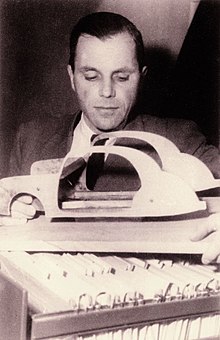**1. Design Process:**
– Designing involves a sequence of activities to produce a design, which can be a brief or lengthy process involving research, negotiation, and modeling.
– The design process can be done by more people than just recognized designers.
– Two dominant views of the design process are problem-solving and reflection-in-action.
– The rational model, developed by Herbert A. Simon, Gerhard Pahl, and Wolfgang Beitz, optimizes a candidate for known constraints and objectives through discrete stages.
– Design process stages include presentation of designs, design during production, development and improvement of a design, product testing through in situ testing, and post-production design feedback for future designs.
**2. Design History and Education:**
– Design history study is complex and may include pre-industrial objects in narratives.
– Design education institutions date back to the 19th century and cover theory, knowledge, and values in various design areas.
– Early influential design historians include Nikolaus Pevsner and Sigfried Giedion.
– Modern design education was greatly influenced by Bauhaus.
– Design education prepares students for professional design practice and emphasizes designerly ways of knowing and acting.
**3. Philosophies and Approaches to Design:**
– Informal philosophies guide design based on personal values or preferred approaches.
– Critical design critiques existing values, morals, and practices.
– Ecological design prioritizes environmental impacts over the lifecycle.
– Participatory design involves collective creativity and stakeholder involvement.
– User-centered design focuses on end-users’ needs and limitations.
**4. Relationship with the Arts and Design Paradigms:**
– Blurry boundaries exist between art and design, with distinctions based on context and trade.
– Different paradigms describe design activity, exploring the co-evolution of problem-solution in the design process.
– Studies have been conducted in design thinking and software design theories.
– The book ‘The Design of Design’ delves into essays from a computer scientist.
**5. Impact and Future Trends in Design:**
– Design plays a crucial role in shaping user experience, consumer behavior, and brand perception.
– Well-designed products often have higher market demand.
– Design principles include balance, contrast, emphasis, rhythm, and unity, guiding visually appealing compositions.
– Design has evolved over centuries in response to cultural, technological, and societal changes.
– Future trends in design include augmented reality, virtual reality, user-centered design approaches, data-driven design, minimalist aesthetics, and cross-disciplinary collaborations.
This article has multiple issues. Please help improve it or discuss these issues on the talk page. (Learn how and when to remove these template messages)
|
A design is the concept of or proposal for an object, process, or system. Design refers to something that is or has been intentionally created by a thinking agent, though it is sometimes used to refer to the nature of something – its design. The verb to design expresses the process of developing a design. In some cases, the direct construction of an object without an explicit prior plan may also be considered to be a design (such as arts and crafts). A design is expected to have a purpose within a certain context, usually having to satisfy certain goals and constraints, and to take into account aesthetic, functional, economic, environmental or socio-political considerations. Typical examples of designs include architectural and engineering drawings, circuit diagrams, sewing patterns, and less tangible artefacts such as business process models.





English
Etymology
From Middle English designen, from Old French designer, from Latin designō (“I mark out, point out, describe, design, contrive”), from de- (or dis-) + signō (“I mark”), from signum (“mark”).